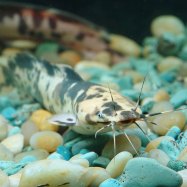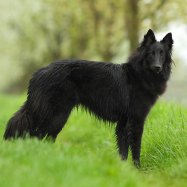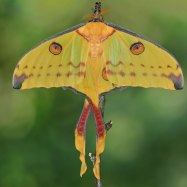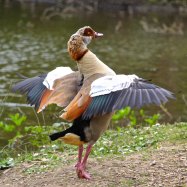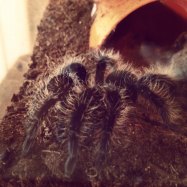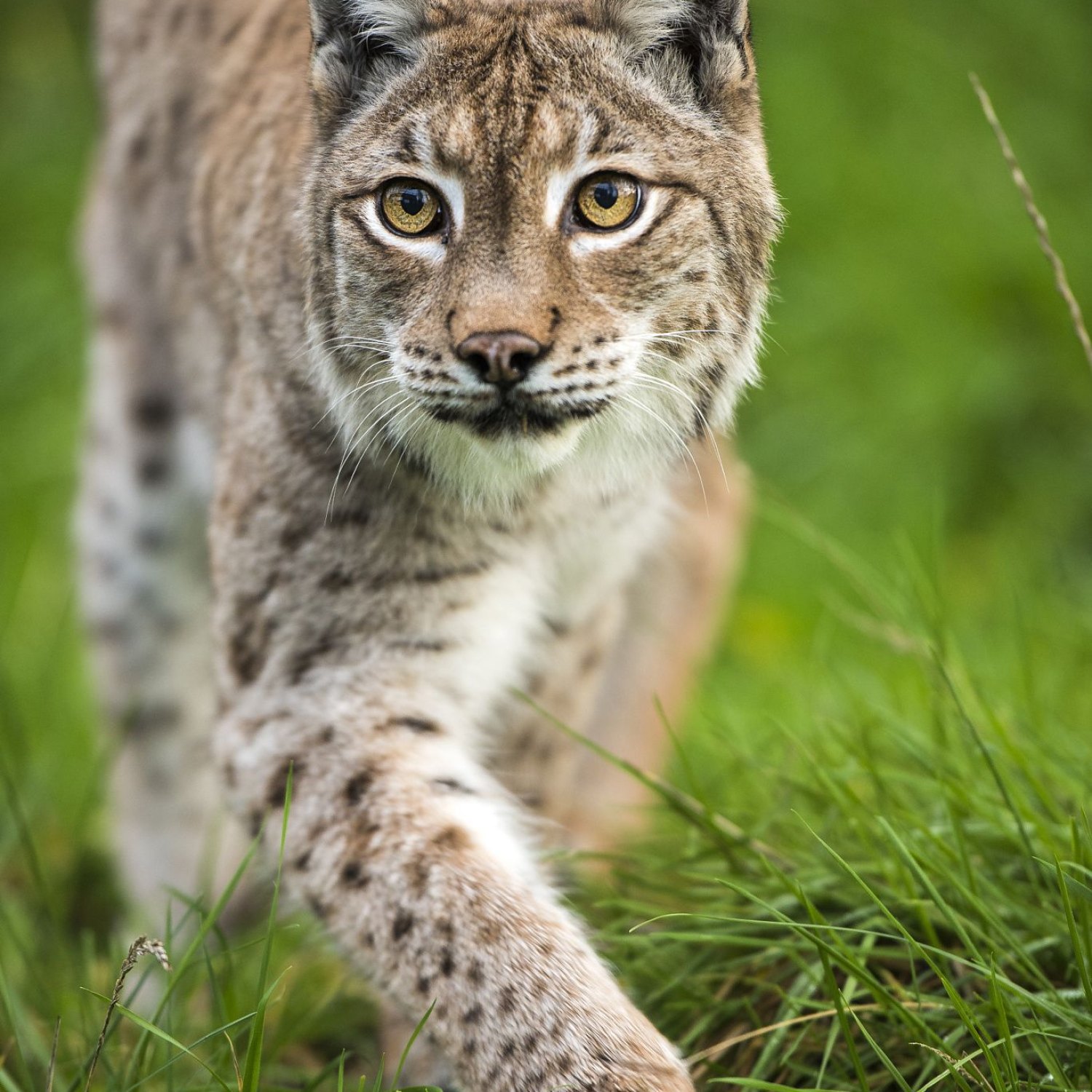
Eurasian Lynx
80-130 cm (31-51 in)
The Eurasian Lynx is a stunning medium-sized cat with a muscular build. Found in Eurasia, this elusive creature can grow up to 130 cm in length and is part of the Felidae family. With its beautiful fur and impressive agility, the Lynx is a true marvel of nature. #EurasianLynx #Felidae #Wildlife #Naturelovers
Animal Details Summary:
Common Name: Eurasian Lynx
Kingdom: Animalia
Habitat: Forests
The Elusive and Majestic Eurasian Lynx: A Closer Look at Europe's Forest Sentinel
Have you ever heard a story about a creature so elusive and majestic that it seemed like something out of a fairy tale? Well, in the dense forests of Europe and Asia, there is such an animal – the Eurasian Lynx. With its piercing golden eyes and regal demeanor, the lynx represents a true embodiment of grace and strength.But beyond its striking appearance and elusive nature, there is much more to learn about this fascinating creature. From its scientific classification to its geographical distribution and unique characteristics, let's take a closer look at the magnificent Eurasian Lynx Eurasian Lynx.
Introducing the Lynx Lynx: Scientific Classification
To truly understand the Eurasian Lynx, we must first know its scientific name – Lynx lynx. It belongs to the Animalia kingdom, the highest level of classification in the animal kingdom hierarchy. This kingdom includes all living animals, from the smallest insect to the largest mammals.Within the Animalia kingdom, the Eurasian Lynx is classified under the phylum Chordata, which includes all animals with a spinal cord. Next in the classification hierarchy is the class Mammalia, which includes all mammals. Mammals are characterized by their warm-blooded nature, hair, and ability to produce milk for their young.
Moving further down the classification, the Eurasian Lynx is grouped under the order Carnivora, which includes animals that primarily feed on other animals. This explains the lynx's feeding method – they are carnivorous animals. Finally, the Eurasian Lynx belongs to the family Felidae, which includes all cat species Eastern Chipmunk.
So, we can conclude that the Eurasian Lynx is a medium-sized mammal belonging to the cat family. But there's a lot more to discover about this elusive creature.
A Home in the Forests: Habitat and Distribution
The Eurasian Lynx is a true forest dweller, making the dense forests of Europe and Asia its home. Its preferred habitat includes temperate and boreal forests, taiga, and mixed woodland environments. These forests provide excellent cover and hunting grounds for the lynx, with dense undergrowth and a wide range of prey species.Within Europe, the Eurasian Lynx can be found in countries such as Norway, Sweden, Finland, Estonia, Latvia, Belarus, Poland, and Russia. In Asia, its range extends to Kazakhstan, Kyrgyzstan, Mongolia, and China. This widespread distribution gives us a sense of the lynx's adaptability and resilience in different climates and environments.
Interestingly, the Eurasian Lynx was once found throughout Europe, including countries such as Germany, France, and the United Kingdom. However, due to extensive hunting and habitat loss, their numbers declined drastically, and they are now only found in a few select countries.
Unveiling the Natural Hunter: Feeding and Adaptation
As mentioned earlier, the Eurasian Lynx is a carnivorous animal, which means it feeds primarily on other animals. Its diet mainly consists of small prey such as birds, rodents, and hares, but it can also bring down larger animals such as deer, chamois, and wild boar.The Eurasian Lynx is an excellent hunter, and its unique physical adaptations aid it in its hunting prowess. Its large, powerful paws act as snowshoes, allowing it to walk on top of deep snow and move silently through the forest. Its long, sharp claws provide the necessary grip and traction when chasing prey or scaling trees.
Moreover, the lynx's keen sense of hearing and eyesight gives it an advantage in detecting prey, even in low light conditions. And to top it all off, the lynx's gray to reddish-brown coloration provides excellent camouflage in its forest habitat, making it nearly invisible to its prey.
The Look and Build of the Eurasian Lynx
The Eurasian Lynx's physical appearance is truly mesmerizing. It has a medium-sized body, with a muscular build, making it a formidable predator in its environment. On average, it can grow up to 80-130 cm (31-51 in) in length, with males being slightly larger than females.Its fur is thick and fluffy, perfectly adapted to withstand cold temperatures. Its tail is relatively short, only about one-third of its body length, and has a black tip. But it's the lynx's face that truly captures one's attention. It has triangular-shaped ears with black tufts at the tips, providing excellent hearing capabilities. Its eyes, as mentioned earlier, are a piercing golden color, giving it a regal and mysterious look.
Its body shape and physical adaptations make it a skilled hunter, able to navigate its forest habitat with ease and precision.
The Lynx in Culture and Mythology
The Eurasian Lynx has been an important figure in many cultures and mythologies throughout history. In ancient Greek mythology, the lynx was believed to have supernatural powers and was associated with the god of communication, Hermes. It was said that the lynx's keen vision allowed it to see through deception, making it a symbol of wisdom and foresight.In Norse mythology, the lynx was associated with the deity Freya, who was known as the goddess of love, fertility, and war. She was often depicted with lynx fur and was said to have the power to transform into a lynx.
The lynx has also been referenced in literature, art, and even as a symbol for sports teams. Its mysterious and elusive nature has captured the imagination of people throughout history, making it an iconic and revered animal.
The Threats to the Eurasian Lynx
Despite its adaptability and resilience, the Eurasian Lynx faces numerous threats in its natural habitat. Hunting and trapping, both for sport and for its fur, have been the primary cause of the lynx's decline in the past. While these activities are now illegal in most countries, poaching still remains a significant threat to the species.Habitat loss and fragmentation also pose a significant challenge for the Eurasian Lynx. As urbanization and human activities continue to expand, the forests that serve as the lynx's home are slowly disappearing, leaving the animal with less space to roam and hunt.
Additionally, climate change is also affecting the lynx's habitat and prey availability. Rising temperatures and changes in weather patterns can have a severe impact on the forests and, subsequently, the lynx's survival.
Conservation Efforts and Future Prospects
Due to the decline in its population in the past, the Eurasian Lynx has been listed as a protected species in many countries, making it illegal to hunt, trap, or harm these animals. These laws have helped in the recovery of the species in some countries, but more efforts are needed to ensure its continued survival.Conservation groups and organizations are working towards creating larger protected areas for the lynx and implementing measures to reduce human-wildlife conflicts. Research is ongoing to better understand the lynx's ecology and behavior, which will contribute to effective conservation strategies.
With increased awareness and conservation efforts, there is hope for the Eurasian Lynx's future. It serves as an important ambassador for healthy forest ecosystems and a reminder of the beauty and diversity of our natural world.
In Conclusion
The Eurasian Lynx is a truly remarkable animal, representing the perfect blend of grace, strength, and mystery. Its elusive nature and unique characteristics make it a captivating creature, and its vital role in the forest ecosystem cannot be underestimated.Through understanding and appreciating the Eurasian Lynx, we can work towards its protection and conservation, ensuring its rightful place in our forests for generations to come. So, let's continue to admire and respect this forest sentinel and do our part in preserving its natural habitat.

Eurasian Lynx
Animal Details Eurasian Lynx - Scientific Name: Lynx lynx
- Category: Animals E
- Scientific Name: Lynx lynx
- Common Name: Eurasian Lynx
- Kingdom: Animalia
- Phylum: Chordata
- Class: Mammalia
- Order: Carnivora
- Family: Felidae
- Habitat: Forests
- Feeding Method: Carnivorous
- Geographical Distribution: Europe, Asia
- Country of Origin: Various countries in Europe and Asia
- Location: Eurasia
- Animal Coloration: Gray to reddish-brown
- Body Shape: Medium-sized with a muscular build
- Length: 80-130 cm (31-51 in)
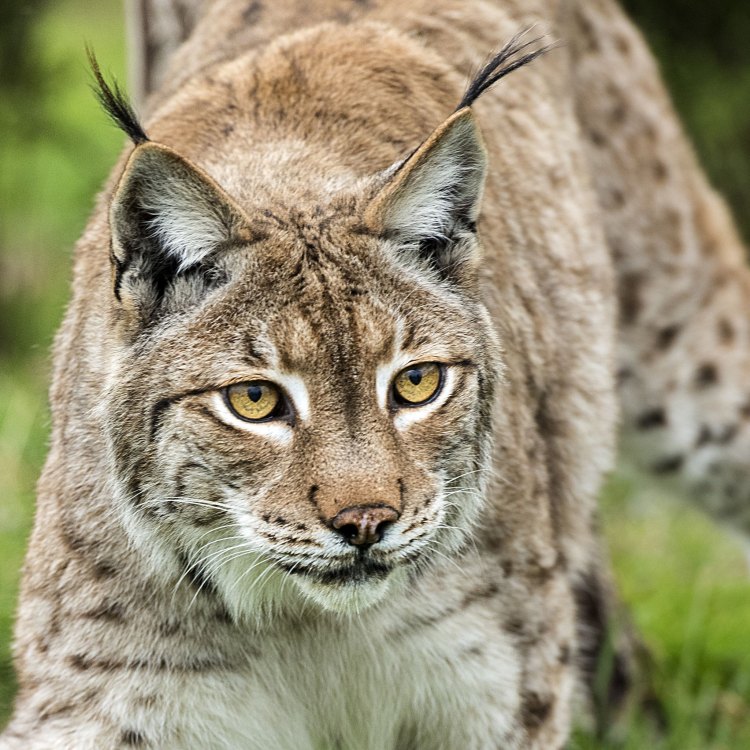
Eurasian Lynx
- Adult Size: 50-130 cm (20-51 in)
- Average Lifespan: 10-15 years
- Reproduction: Sexual
- Reproductive Behavior: Polygamous
- Sound or Call: A variety of calls including growls and meows
- Migration Pattern: Non-migratory
- Social Groups: Solitary
- Behavior: Nocturnal and territorial
- Threats: Habitat loss, illegal hunting
- Conservation Status: Least Concern
- Impact on Ecosystem: Regulates prey populations
- Human Use: Hunted for its fur
- Distinctive Features: Tufted ears and short tail
- Interesting Facts: Eurasian Lynx have a strong bite force that can crush bones
- Predator: No natural predators
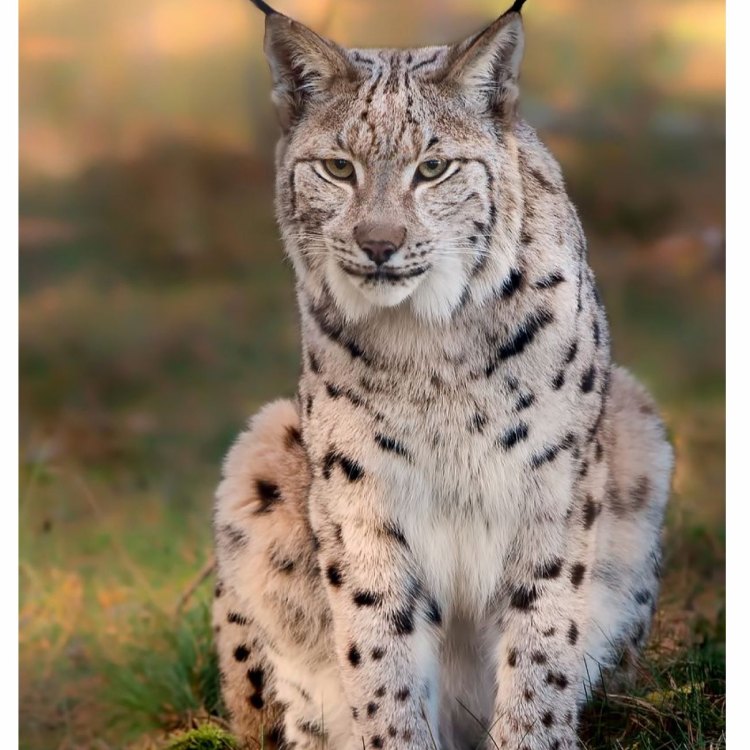
Lynx lynx
The Mysterious and Majestic Eurasian Lynx: An Apex Predator of the Northern Hemisphere
In the dense forests of Europe and Asia, a solitary and elusive creature roams, known for its fierce demeanor and striking appearance. The Eurasian Lynx, with its tufted ears, piercing eyes, and short tail, is a formidable predator that plays a crucial role in regulating prey populations and maintaining the balance of its ecosystem.Standing at 50-130 cm (20-51 in) in length and weighing up to 30 kg (66 lbs), the Eurasian Lynx is the third largest predator in Europe, after the brown bear and the gray wolf. It is also found in parts of Asia, including the Himalayas and the Russian Far East PeaceOfAnimals.Com. Its average lifespan ranges from 10 to 15 years in the wild, making it a long-lived species in comparison to other wild cats.
Reproduction in Eurasian Lynx is sexual, meaning individuals of opposite genders come together to mate. However, they are polygamous, with males often mating with multiple females during the breeding season, which occurs between January and April. Females give birth to 1-4 kittens after a gestation period of around 70 days. The mother takes full responsibility for raising and teaching her young to hunt, making the Lynx an attentive and dedicated parent.
One of the most distinctive and mesmerizing qualities of the Eurasian Lynx is its vocalizations. They use a variety of calls, from low growls and deep roars to high-pitched meows and purrs, to communicate with other lynx and mark their territories. These calls can be heard from a distance of over 3 km (1.8 miles), making them a vital form of communication for these solitary creatures European Goldfinch.
Unlike other large cats, the Eurasian Lynx is not a migratory species. They maintain a home range in a specific area of their habitat and do not venture outside of it. This range varies depending on the availability of prey and can cover up to 1,000 square kilometers (386 square miles). The Lynx strictly guards its territory from other Lynx, and intruders are met with aggressive behaviors like growls and hissing.
Being nocturnal animals, Eurasian Lynx are active mainly at night, making it challenging to study their behavior and movements. They are also solitary by nature and prefer to live and hunt alone, avoiding contact with other Lynx except during mating season or when raising young.
The primary diet of the Eurasian Lynx consists of small to medium-sized mammals such as deer, rabbits, hares, and rodents. They are skilled hunters and have a success rate of 75-80% while hunting, thanks to their extraordinary physical abilities. They are known for their agility and speed, which enables them to ambush and catch their prey with ease. Another distinct feature of the Lynx is its strong bite force, which can crush the bones of its prey, making them a formidable opponent in the wild.
Despite their significant role in regulating prey populations, the Eurasian Lynx faces several threats to its survival. Habitat loss and fragmentation due to human development have led to a decline in their population. Illegal hunting for its fur, which is prized in the fashion industry, has also been a significant factor in their decline. Although they are listed as "Least Concern" on the IUCN Red List, the Lynx population is still vulnerable in some regions, such as Central Asia.
Apart from its critical role in maintaining the balance of its ecosystem, the Eurasian Lynx also has a significant impact on the local economy through eco-tourism. In countries like Norway and Sweden, Lynx safaris are popular, attracting tourists from around the world. These safaris not only provide an opportunity to see the elusive Lynx in its natural habitat but also contribute to the local economy and conservation efforts.
Despite its elusive nature, the Eurasian Lynx has become ingrained in human culture and history. In ancient Greek mythology, the Lynx is associated with the goddess Artemis, the huntress, and protector of the forest. The Lynx has also been a part of many folktales, often portrayed as a symbol of strength and mystery.
In terms of human use, the Lynx has been hunted for its fur for centuries. Its beautiful spotted coat was highly sought after, and it was often used to make coats, hats, and other garments. However, due to strict conservation measures and regulations, the hunting of Lynx for its fur is now illegal in most countries.
The majestic and mysterious Eurasian Lynx is a true marvel of the northern hemisphere. With its distinctive features, impressive hunting abilities, and crucial role in regulating prey populations, it is undoubtedly an apex predator. While facing numerous threats to its survival, conservation efforts are being made to ensure that this beautiful and vital species continues to thrive and roam freely in the wild. Its presence reminds us of the wild and untamed beauty of the natural world and the importance of preserving it for generations to come.
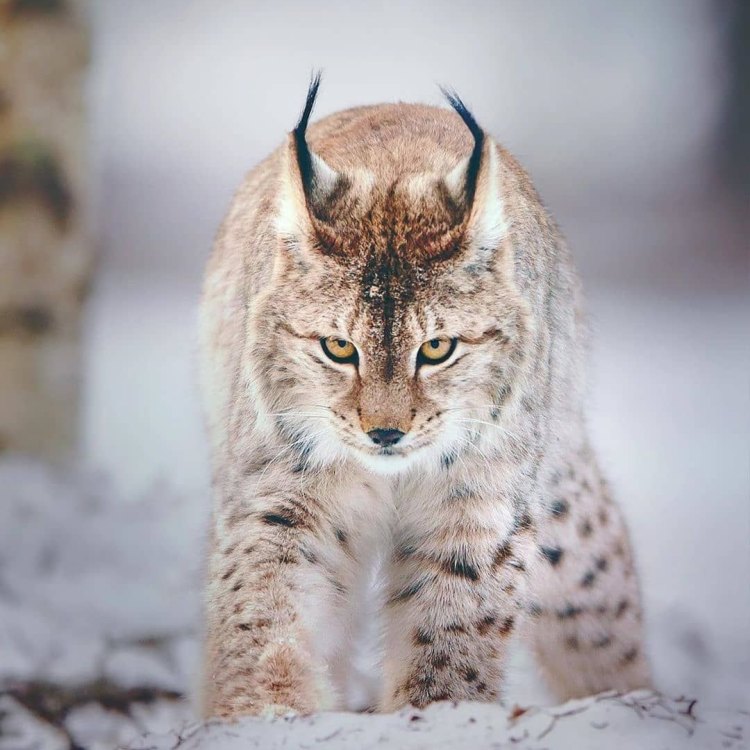
The Elusive and Majestic Eurasian Lynx: A Closer Look at Europe's Forest Sentinel
Disclaimer: The content provided is for informational purposes only. We cannot guarantee the accuracy of the information on this page 100%. All information provided here may change without prior notice.

